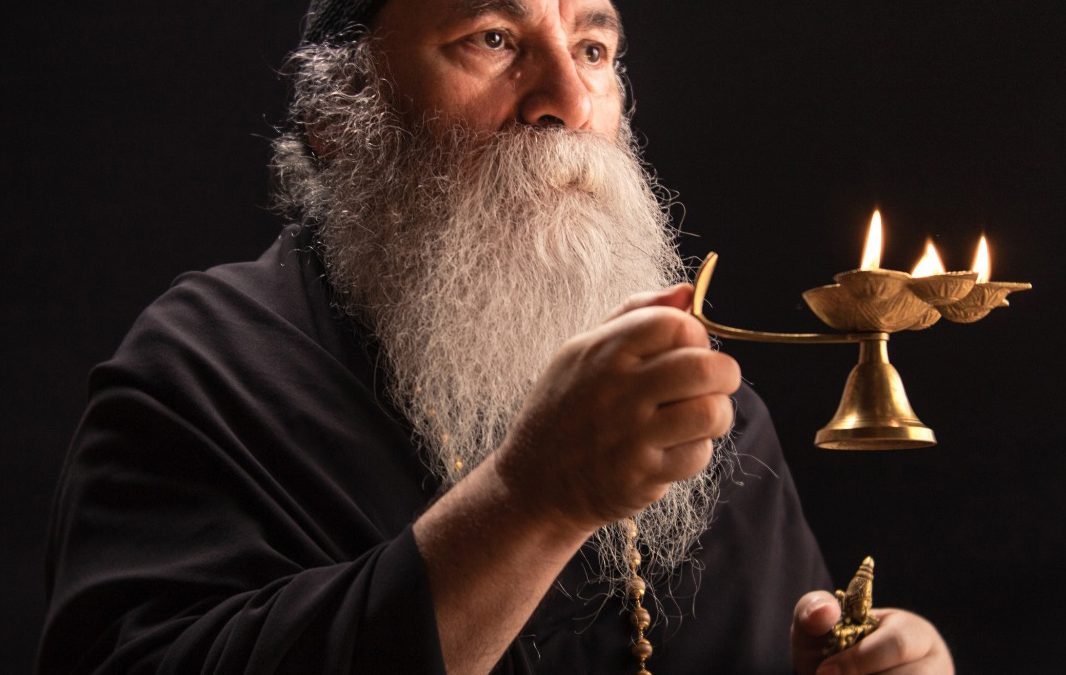
by Ma Muktananda | Jul 31, 2022 | FAQ
Question:
What is the need for a temple like the Śrī Śrī Bhagavān Yeshua Jagat Jananī Miriam Premānanda Mandir in the Avadhutashram?
Answer:
A temple constitutes a place where human beings gather with a selfless spirit and devotional attitude to worship God. It is the proper place for the practice of bhakti-yoga. It is a place capable of elevating us to the recognition of consciousness. Seeing the deities, praying, and leaving a donation are pious acts traditionally done when visiting a temple. A true mandir is not only a religious site, but also a spiritual one. There are many schools, colleges, institutes, universities, and educational institutions. However, temples are not only capable of informing us, but also of transforming us.
by Ma Muktananda | Jul 31, 2022 | FAQ
Question:
If Prabhuji is retired from public life, why do you publish his picture, make a site for him on the internet, and so on?
Answer:
(Written by Swami Ramananda)
Prabhuji is our master and the founder of the mission. The tradition of the Sanātana-dharma religion advises the glorification of the guru by his disciples. As mentioned Śrīla Viśvanātha Cakravartī Ṭhākura:
yasya prasādād bhagavat-prasādo
yasyāprasādān na gatiḥ kuto ’pi
dhyāyan stuvaṁs tasya yaśas tri-sandhyaṁ
vande guroḥ śrī-caraṇāravindam
“By the mercy of the spiritual master one receives the benediction of Kṛṣṇa. Without the grace of the spiritual master, one cannot make any advancement. Therefore, I should always remember and praise the spiritual master. At least three times a day I should offer my respectful obeisances unto the lotus feet of my guru.” (Śrī Śrī Gurvaṣṭaka, 8)
By glorifying our master, we are just following our millennia-old tradition. The Śrīmad-bhāgavatam says:
rahūgaṇaitat tapasā na yāti
na cejyayā nirvapaṇād gṛhād vā
na cchandasā naiva jalāgni-sūryair
vinā mahat-pāda-rajo-’bhiṣekam
“My dear King Rahūgaṇa, unless one has the opportunity to smear his entire body with the dust of the lotus feet of great devotees, one cannot realize the Absolute Truth. One cannot realize the Absolute Truth simply by observing celibacy (brahmacarya), strictly following the rules and regulations of householder life, leaving home as a vānaprastha, accepting sannyāsa, or undergoing severe penances in winter by keeping oneself submerged in water or surrounding oneself in summer by fire and the scorching heat of the sun. There are many other processes to understand the Absolute Truth, but the Absolute Truth is only revealed to one who has attained the mercy of a great devotee.” (Śrīmad-bhāgavatam, 5.12.12)
by Ma Muktananda | Jul 29, 2022 | The path
The Path of Retroprogressive Alignment does not require you to be part of a group or a member of an organization, institution, society, congregation, club, or exclusive community. Living in a temple, monastery, or āśram is not mandatory, because it is not about a change of residence, but of consciousness. It does not urge you to believe, but to doubt. It does not demand you to accept something, but to explore, investigate, examine, inquire, and question everything. It does not suggest being what you should be but being what you really are.
The Path of Retroprogressive Alignment supports freedom of expression but not proselytizing. This route does not promise answers to our questions but induces us to question our answers. It does not promise to be what we are not or to attain what we have not already achieved. It is a retro-evolutionary path of self-discovery that leads from what we think we are to what we really are. It is not the only way, nor the best, the simplest, or the most direct. It is an involutionary process par excellence that shows what is obvious and undeniable but usually goes unnoticed: that which is simple, innocent, and natural. It is a path that begins and ends in you.
The Path of Retroprogressive Alignment is a continuous revelation that expands eternally. It delves into consciousness from an ontological perspective, transcending all religion and spiritual paths. It is the discovery of diversity as a unique and inclusive reality. It is the encounter of consciousness with itself, aware of itself and its own reality. In fact, this path is a simple invitation to dance in the now, to love the present moment, and to celebrate our authenticity. It is an unconditional proposal to stop living as a victim of circumstance and to live as a passionate adventurer. It is a call to return to the place we have never left, without offering us anything we do not already possess or teaching us anything we do not already know. It is a call for an inner revolution and to enter the fire of life that only consumes dreams, illusions, and fantasies but does not touch what we are. It does not help us reach our desired goal, but instead prepares us for the unexpected miracle.
This path was nurtured over a lifetime dedicated to the search for Truth. It is a grateful offering to existence for what I have received. But remember, do not look for me. Look for yourself. It is not me you need, because you are the only one who really matters. This life is just a wonderful parenthesis in eternity to know and love. What you long for lies in you, here and now, as what you really are.
Your unconditional well-wisher,
Prabhuji


Recent Comments